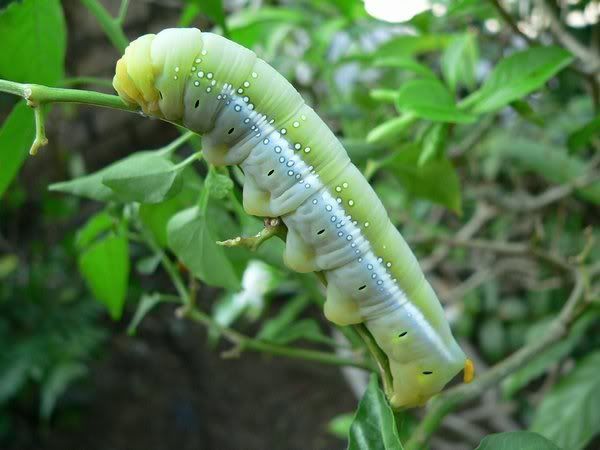Shot this in my garden today. The cat was found crawling on a wall. I released it onto a nearby plant and hoped it could return to its food plant.
I'm not very good with ID-ing caterpillars, so just wondering if any of the experts could help out.

Shot this in my garden today. The cat was found crawling on a wall. I released it onto a nearby plant and hoped it could return to its food plant.
I'm not very good with ID-ing caterpillars, so just wondering if any of the experts could help out.

あまり たから やま
I have managed to find the food plant this morning.
It is the "Desert-Rose" (Adenium Obesum). The cat has a voracious appetite as it "walloped" all the leaves and shoots of the plant. The Adenium Obesum is now in a baldy state.
Last edited by cho-cho-san; 18-Mar-2008 at 10:41 PM. Reason: Added "Obesum"
あまり たから やま
Spent this afternoon Googling and realised that this is a cat of the Oleander Hawkmoth (Deilephila nerii or Daphnis nerii).
Grateful if Mod could shift this thread to "Moth Photography" ?
Thank you, (embarassed)
あまり たから やま
Thank you benetay.
Glad to learn something new today.
Cheers !
あまり たから やま
I had thought that the cat was Daphnis nerii, but the absence of the blue eye-spots just behind the head made me wonder.
As this is a moth, perhaps this thread could be transferred to that forum, and then Roger may be able to advise the frequency of these 'blind' cats as compared the the blue-spotted ones.
Ah! Thank you. So it is not 'blind'. Roger, kindly disregard my last query!
Thread moved to Moth Photography sub-forum.
These cats eat Oleander, Vinca (Periwinkle) and a number of other "toxic" plants. I believe Adenium is also a "toxic" plant too.
However, the cats and adult moths don't seem to be immune to predators because of this, unlike those of butterflies.